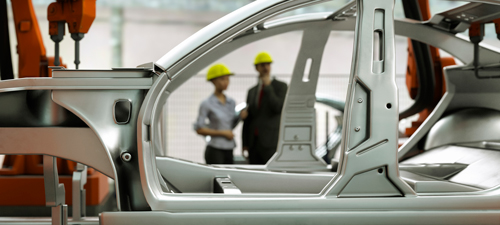Injection molding produces a wide variety of products and components for applications throughout the world. While each individual application requires a customized product design based on specific details, part specifications and uses, there are several materials that are the most popular for use in injection molding processes. Understanding a little bit more about the top plastics for injection molding can help you decide which material is right for your application.
- Polypropylene: Polypropylene is one of the most commonly used types of plastic. This plastic material is popular for a number of reasons. For one thing, polypropylene is very durable. It does not break down easily and can withstand high temperatures without melting, making it a good choice for items such as microwavable containers.
- Acrylonitrile butadiene styrene: Acrylonitrile butadiene styrene (ABS) is another durable plastic material that’s popular for use in many different products, including children’s toys. This plastic is opaque and can be colored depending on the specific application. Unlike some other types of plastic, ABS can be melted and remolded several times. This makes it possible to recycle unused ABS plastic, even after it’s been melted for injection molding.
- High-density polyethylene: High-density polyethylene (HDPE) is a highly versatile plastic that can be made into both rigid products, like bike helmets, and flexible plastic products like grocery bags. Despite its lightweight nature, HDPE is known as one of the most durable and long-lasting plastic materials on the market. Its malleability makes it suitable for a virtually endless array of applications.
- Nylon: Like HDPE and polypropylene, nylon (PA) has a high melting point and exceptional strength that make it very popular for injection molded products and components. PA is commonly used for parts and components in the automotive industry because of its heat resistance and low friction. PA can be combined with other polymers and materials depending on the application to improve the tensile strength of a product while maintaining some of the physical properties and characteristics offered by other materials.
Polycarbonate: Polycarbonate (PC) is a transparent plastic material that can be colored to match the specific product or component design. This plastic can also be left in its natural form, which offers effective light transmission at levels that are similar to that of glass. Because of its transparency, PC is used to make lenses for glasses and protective equipment as well as casings for lighting fixtures. PC is also a very pliable plastic that can even be molded at room temperature in sheet form.
Choosing the right plastic material for your application isn’t always easy, but the team at KASO Plastics is here to help. We provide injection molding, engineering services and secondary manufacturing services to help our clients achieve the best outcomes possible for their project. Give us a call to get started with a consultation today.








 Molding services for Agricultural customers
Molding services for Agricultural customers